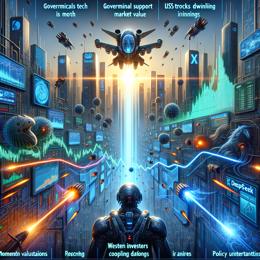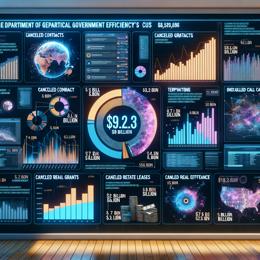Image created by AI
Bracket Creep Pushes S. Africans to Pay up to 21% More Tax than a Decade Ago
Amid a climate of dwindling government finances and an ever-straining tax base, South Africans have found themselves paying substantially more tax today compared to ten years ago. Bracket creep has become the covert operative that has seen taxpayers submit up to 21% more to the fiscus without the official hike in tax rates. As the 2023/24 financial year bookends, the figures paint a concerning picture: tax collections have grown a meager 2.6%, a figure that trails behind the inflation rate, exacerbating the tax burden.
The National Treasury's report disclosed a daunting R347 billion deficit for the year 2023/24. To combat this shortfall, plans are in place to augment tax collections by an additional R15 billion in the impending 2024/25 tax year, as explained by Pieter Koekemoer, Coronation’s head of personal investments. The method behind this increase is bracket creep—a nuanced technique where tax brackets are kept stagnant and not adjusted with inflation. This stasis leads to taxpayers inadvertently moving into higher tax brackets, resulting in a bolstered revenue stream for the government without a direct increase in tax rates.
Bracket creep, while not a new fiscal phenomenon, has become more pronounced in recent times. Up until the 2014/15 financial year, South Africa's fiscal budgets were characterized by better economic performance and, consequently, offered real tax relief. However, the aftermath of the state capture years and significant underinvestment in infrastructure led to a weaker economic stance, catalyzing material tax hikes announced in five consecutive budgets post-2015/16. Despite the subsequent four budgets not introducing any major changes, they also failed to provide relief against the backdrop of inflation's erosive effects.
The cumulative increase in effective tax rates over the past decade has been nothing short of dramatic. Koekemoer cited an example where the effective tax rate on an income of R250,000 was 15% back in 2014; fast forward to 2024 and it has surged to 18.2%, marking a substantial 21.3% shift in the effective tax rate over ten years. Value-added tax has seen a solitary increment in South Africa’s history but nonetheless underwent a 7.1% effective tax rate change since 2014. Provided in the article was a table showcasing the cumulative impact of tax increases and the creeping effect—tangible evidence of the growing fiscal pressures facing South Africans.
This in-depth analysis of South Africa's tax predicament offers crucial insight into the mechanics of bracket creep and places the increasing tax liability in a broader economic and historical context. As the government grapples with fiscal deficits and sluggish economic recovery, the topic remains of high relevance to taxpayers who are essential to the nation’s revenue but also vital bearers of its financial health.










